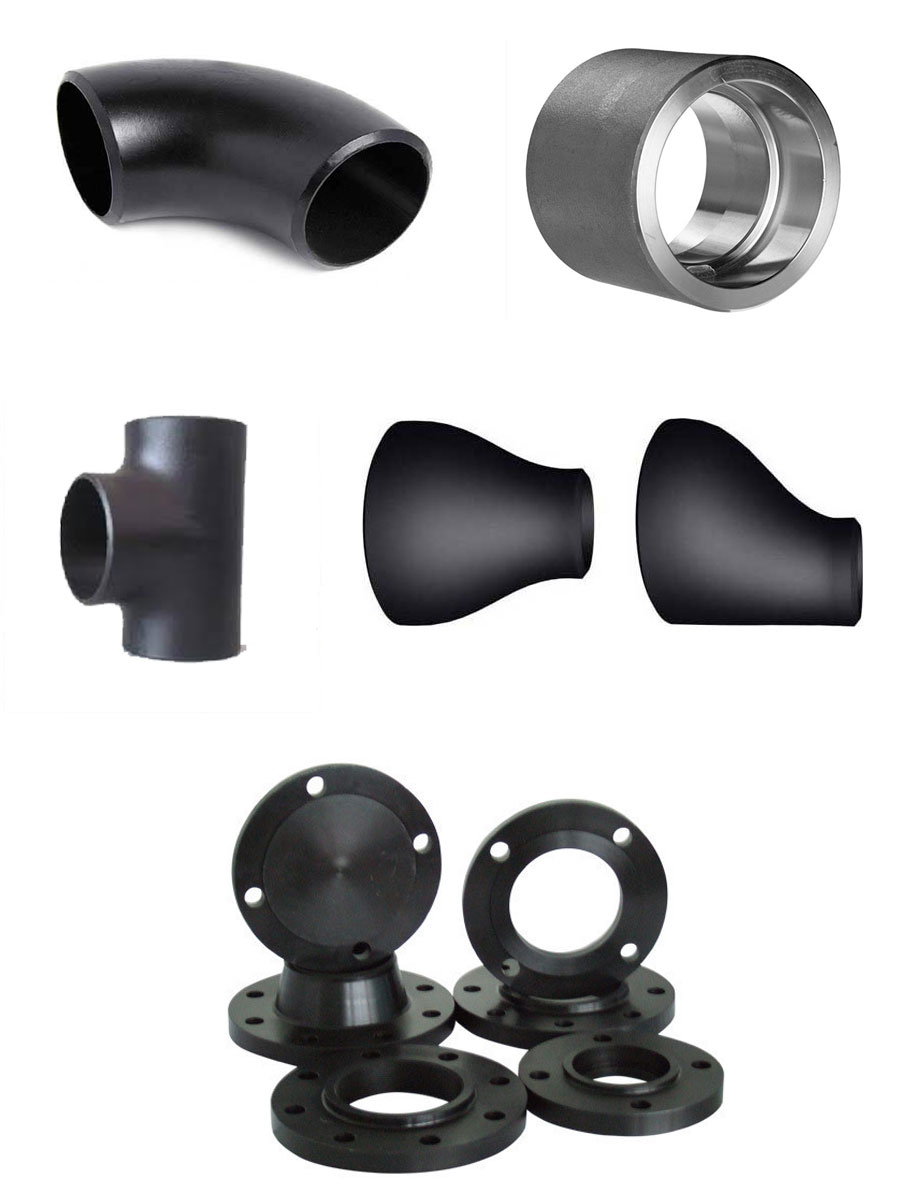Pipe Fittings
Pipe Fittings are used in pipe plumbing systems to connect straight pipe or tubing sections, to adapt to different sizes or shapes, and for other purposes, such as regulating or measuring fluid flow. Piping or tubing are usually (but not always) inserted into fittings to make connections. To avoid confusion, connections are conventionally assigned a gender of male or female, respectively abbreviated as “M” or “F”. An example of this is a “3/4 inch female adapter NPT,” which would have a corresponding male connection of the same size and thread standard (in this case, NPT).
While there are hundreds of specialized fittings manufactured, some common types of fittings are used widely in piping and plumbing systems.
Elbow
An elbow is a pipe fitting installed between two lengths of pipe or tubing to allow a change of direction, usually a 90° or 45° angle, though 22.5° elbows are also made. The ends may be machined for butt welding, threaded (usually female), or socketed, etc. When the two ends differ in size, the fitting is called a reducing elbow or reducer elbow.
Coupling
A coupling connects two pipes to each other. If the size of the pipe is not the same, the fitting may be called a reducing coupling or reducer, or an adapter. By convention, the term “expander” is not generally used for a coupler that increases pipe size; instead the term “reducer” is used.
Reducer
A reducer allows for a change in pipe size to meet hydraulic flow requirements of the system, or to adapt to existing piping of a different size. Reducers are usually concentric but eccentric reducers are used when required to maintain the same top- or bottom-of-pipe level.
Tee
A tee is the most common pipe fitting. It is available with all female thread sockets, all solvent weld sockets, or with opposed solvent weld sockets and a side outlet with female threads. It is used to either combine or split a fluid flow. It is a type of pipe fitting which is T-shaped having two outlets, at 90° to the connection to the main line. It is a short piece of pipe with a lateral outlet. A tee is used for connecting pipes of different diameters or for changing the direction of pipe runs.
Flange
Flanges are generally used when there is a connection to valves, in-line instruments and/or connection to equipment nozzles is required. Flange fittings generally involve pressing two surfaces to be joined tightly together, by means of threaded bolts, wedges, clamps, or other means of applying high compressive forces.
Flanges are designed to the following pressure ratings: 150 lbs, 300 lbs, 400 lbs, 600 lbs, 900 lbs,1500 lbs and 2500 lbs or 10Bar, 15Bar, 25Bar, 40Bar, 64Bar, 100Bar and 150Bar. Various types of flanges are available depending upon the type of their constructional features.








